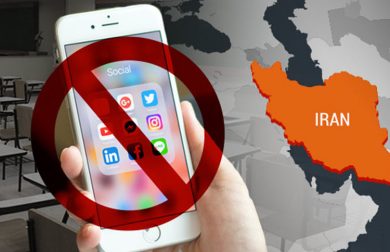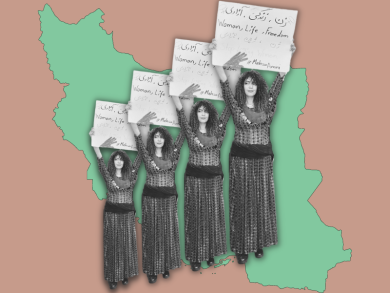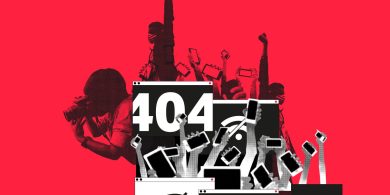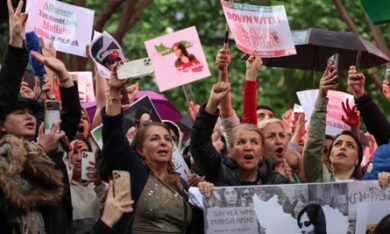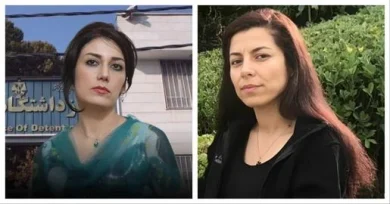On September 16, 2022, the death of Mahsa (Jina) Amini in the custody of Iran’s morality police became a spark that set the world on fire. Her name became a chant of defiance echoing from the alleys of Tehran to the halls of the European Parliament. But Mahsa’s story is not just about her death. It’s about the extraordinary power of women in Iran — and how their leadership has turned the struggle against the Islamic Revolutionary Guard Corps (IRGC) into a global movement.
For decades, the IRGC has policed not just Iran’s borders but its bodies, its thoughts, and its dreams. It has enforced a warped vision of religion, used fear as a weapon, and tried to erase anyone who wouldn’t bow. But it is women — and the memory of Mahsa — who have proven to be its most potent challenge.
This is not just a feminist struggle. It is a human struggle, led by women who have refused to be silenced, even when the cost is everything.
1. Mahsa Amini: A Name, A Symbol, A Movement
Mahsa was 22 years old, Kurdish, and full of life. Arrested for allegedly wearing her hijab “improperly,” she was beaten, detained, and killed by the regime’s morality police — a force that operates with the impunity of the IRGC’s broader apparatus of control.
But her story did not end in that detention center. Her death became a symbol of:
• The daily violence faced by women under the regime’s gender apartheid.
• The IRGC’s systematic use of religious policing to dominate society.
• The possibility of resistance in the face of overwhelming power.
Mahsa’s face, framed by her loose hijab, became an icon of courage. And her name became a battle cry: “Women, Life, Freedom.”
2. The IRGC and the War on Women
The IRGC, though primarily a military and intelligence force, is the backbone of the regime’s repression of women. Through its Basij militia and intelligence arms, it enforces:
• Compulsory hijab laws that punish women for “immodesty.”
• Gender segregation in schools, universities, and sports.
• Surveillance and harassment of female journalists, artists, and activists.
• Violent crackdowns on protests led by women.
The IRGC’s ideology sees women’s autonomy as a threat — because a woman who chooses how she dresses, speaks, or lives is a woman who might also demand democracy, equality, and human dignity.
3. Women at the Frontlines: From the Streets to the Screen
When Mahsa’s death sparked protests, it was women who took the lead.
• Teenage girls filmed themselves burning headscarves and chanting in defiance.
• Mothers of the slain stood with photos of their children, refusing to let grief be hidden.
• Journalists like Niloofar Hamedi and Elaheh Mohammadi risked everything to report the truth — and paid for it with prison sentences.
• Exiled feminists amplified the stories abroad, connecting the dots between local violence and global complicity.
This was not just spontaneous anger. It was a movement born of decades of struggle — and led by women who had already learned that silence is not safety.
4. The Hijab as a Battlefield
The hijab, for the IRGC, is more than a piece of cloth. It is a symbol of the regime’s control over the most personal aspect of life: the body.
For many Iranian women, removing the hijab in public is an act of civil disobedience. It says:
• “I will not be your vessel for ideological battles.”
• “I will not carry the burden of your legitimacy.”
• “I will not be invisible.”
The regime knows this. That’s why the IRGC has doubled down on hijab enforcement, treating it not as a religious duty but as a military front.
5. In the Prisons: Women Who Refuse to Break
Behind every street protest are the prisons where the regime tries to break these women.
• Narges Mohammadi, human rights activist, has spent years behind bars, smuggling letters that expose the regime’s torture of female prisoners.
• Sepideh Qoliyan, labor activist, has turned every arrest into an act of defiance, sharing her stories even from solitary confinement.
• Atena Daemi, Yasaman Aryani, and Monireh Arabshahi have been imprisoned for saying one simple thing: women deserve freedom.
In these cells, the regime tries to teach women fear. But again and again, these women teach the regime something else: resistance has no bars.
6. Digital Resistance: A New Kind of Frontline
The IRGC’s surveillance and cyber units target women online with the same intensity they do on the streets. But women have turned the internet into a space of radical truth-telling.
• Anonymous accounts share videos of crackdowns, risking family safety to get the word out.
• Encrypted chat rooms become support networks for women harassed or arrested.
• Diaspora influencers use social media to amplify every protest, every name, every face.
The regime fears this because it cannot bomb a hashtag. And every time the IRGC shuts down the internet, it reveals just how afraid it is of women’s voices.
7. The Role of the Diaspora: Global Sisters in Solidarity
Iranian women in exile have not forgotten their homeland — they have become its loudest advocates.
• Masih Alinejad survived an IRGC kidnapping plot in New York. She now campaigns tirelessly to expose the regime’s misogyny.
• Artists and filmmakers create works that keep the stories of imprisoned women alive.
• Legal experts and NGOs push for sanctions and international accountability.
This global sisterhood is a lifeline — proof that while the IRGC tries to make every woman feel alone, she is part of a world that sees her, hears her, and stands with her.
8. Why Women’s Leadership Scares the IRGC
The IRGC’s fear of women is not cultural — it’s political.
Here’s why:
• Women unify movements. Their leadership bridges ethnic, religious, and class divides.
• Women reveal the regime’s hypocrisy. A state that claims to protect “virtue” but imprisons mothers and daughters is exposed for what it is.
• Women inspire the next generation. Teenage girls chanting “Death to the Dictator” are the regime’s worst nightmare.
The IRGC knows that a woman who demands dignity will not stop at the hijab — she will demand a government that serves her, not the other way around.
9. Justice for Mahsa Means Justice for All
Mahsa’s murder was not an isolated act. It was the culmination of decades of IRGC violence against women. Justice for Mahsa means:
• Ending gender apartheid — not just changing the law, but dismantling the system that makes women second-class citizens.
• Freeing female prisoners of conscience — because no woman should spend a day behind bars for demanding her rights.
• Holding the IRGC accountable — in Iranian courts, in international tribunals, in the hearts and minds of the people.
10. A Global Responsibility
The IRGC counts on the world to forget Mahsa’s name — to treat her death as a tragedy instead of a crime. But the global movement led by Iranian women refuses to forget.
What can the world do?
• Designate the IRGC as a terrorist organization — in the EU, the UK, Canada, and beyond.
• Sanction individuals and companies that profit from gender apartheid.
• Fund Iranian women’s civil society efforts — journalism, art, and legal aid.
• Demand the unconditional release of women political prisoners.
This is not interference in Iran’s affairs. This is solidarity with Iran’s women.
Conclusion: “Women, Life, Freedom” — More Than a Slogan
Mahsa Amini’s death was the spark, but the fire is being kept alive by women who refuse to bow. Their leadership has shown that:
• Freedom is not given — it is taken.
• Dignity is not granted — it is demanded.
• Justice is not a favor — it is a right.
The IRGC will keep trying to silence them. But these women know something the regime has always feared: A government that fears women’s voices has already lost.
Join Our Newsletter!
Stay informed with the latest updates, news, and ways to take action in the fight for justice and global security. Sign up now to get updates delivered straight to your inbox!

